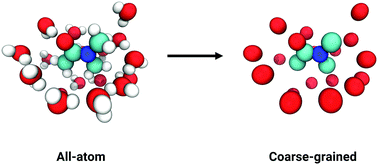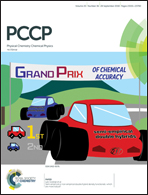Towards a coarse-grained model of the peptoid backbone: the case of N,N-dimethylacetamide
Abstract
In this study, a coarse-grained (CG) model for N,N-dimethylacetamide (DMA), which represents the polypeptoid backbone, is developed as a step towards establishing a CG model of the complex polypeptoid system. Polypeptoids or poly N-substituted glycines are a type of peptidomimetic polymers that are highly tunable, and hence an ideal model system to study self-assembly as a function of chemical groups in aqueous soft matter systems. The DMA CG model is parameterized to reproduce the structural properties of DMA liquid as well as a dilute aqueous solution of DMA using a reference all atom model, namely the OPLS-AA force-field. The intermolecular forces are represented by the Stillinger–Weber potential, that consists of both two- and three-body terms that are very short-ranged. The model is validated on thermodynamic properties of liquid and aqueous DMA, as well as the vapor–liquid interface of liquid DMA and the structure of a concentrated aqueous solution of DMA in water as well as a simple peptoid in water. Without long-ranged interactions and the absence of interaction sites on hydrogen atoms, the CG DMA model is an order of magnitude faster than the higher resolution all-atom (AA) model.



 Please wait while we load your content...
Please wait while we load your content...